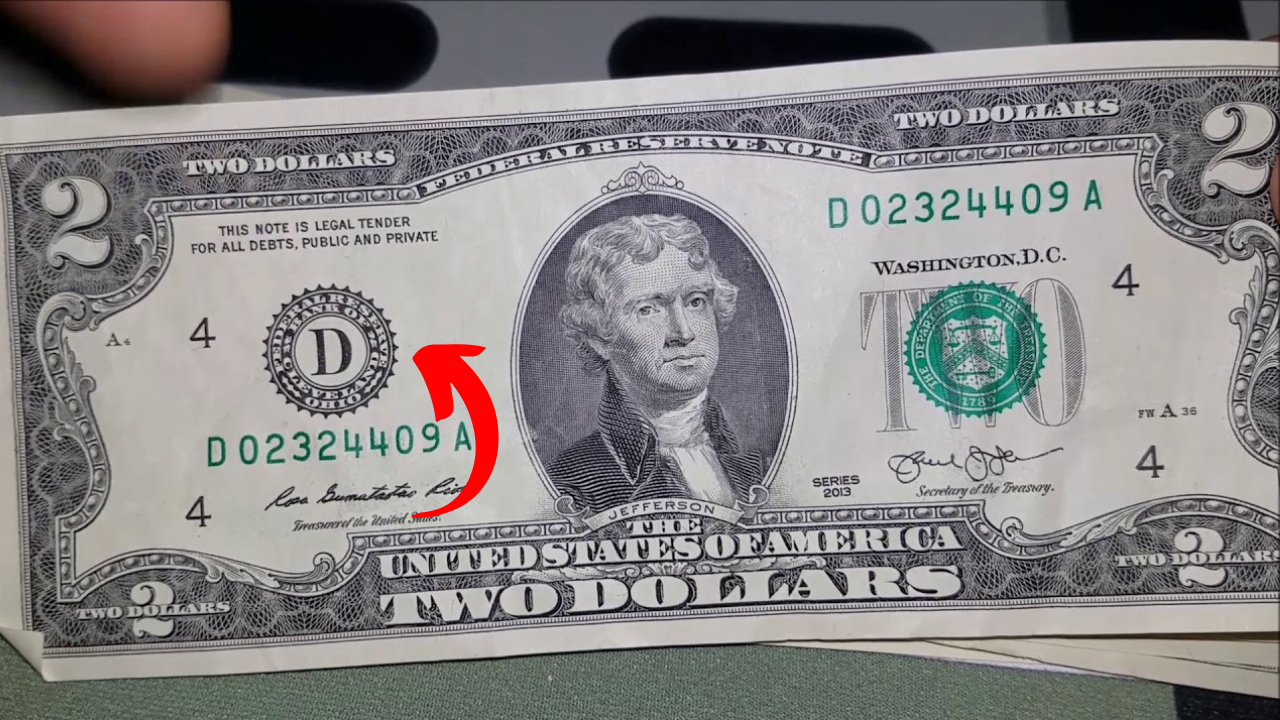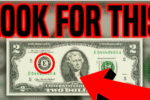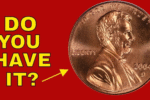1976 $2 Bill Could Be a Hidden Million:In the world of rare currency, surprises often come from the most unexpected places. One such surprise is the humble 1976 $2 bill — a note many Americans have either never seen or long forgotten. Introduced to celebrate the United States Bicentennial, the 1976 $2 bill has become more than just a novelty. For collectors and lucky holders, it could be a hidden treasure worth thousands — or even up to a million dollars under the right conditions.
The Rare Bicentennial Quarter Valued at $2.5 Billion, Still in Circulation
A Unique Place in U.S. Currency
The 1976 $2 bill was reissued by the U.S. Treasury as part of the bicentennial celebration of American independence. Featuring Thomas Jefferson on the front and a reproduction of John Trumbull’s “Declaration of Independence” painting on the back, it stands out among American currency for its symbolic design and historical significance.
Though it was printed in large quantities, it never quite caught on with the public. Many people hoarded the bill as a collectible rather than spending it. As a result, some editions of the bill have become extremely valuable, especially those with rare features.
The Lincoln Wheat Penny Valued Nearly at $4 Billion, Still in Circulation?
What Makes a 1976 $2 Bill Valuable?
Most 1976 $2 bills are only worth face value — two dollars. However, some specific traits can increase their value dramatically:
-
Low Serial Numbers: Bills with serial numbers like 00000001 or those under 00001000 are highly sought after. Collectors pay a premium for these because of their rarity.
-
Star Notes: If your $2 bill has a star (*) at the end of its serial number, it’s a replacement note — meaning it was printed to replace a misprinted bill. These are rarer and thus more valuable.
-
Unique Serial Patterns: Bills with “fancy serial numbers” — like repeating digits (e.g., 22222222), palindromes (e.g., 12344321), or sequential series — can command high prices from collectors.
-
Printing Errors: Any kind of misprint, ink smudge, or off-center design on your bill might increase its value. Error notes are a niche category in currency collecting and often sell for thousands.
-
Condition Matters: Uncirculated bills, meaning those that have never been folded, wrinkled, or spent, are worth far more than worn-out notes. Grading by a professional service (like PMG or PCGS) can help determine condition and value.
-
Uncut Sheets: The U.S. Mint also sold uncut sheets of $2 bills directly to collectors. These are rare and can be worth hundreds or thousands, especially if preserved in mint condition.
Could a $99 Million Lincoln Wheat Penny Be of Benefit to You?
Could Yours Be Worth $1 Million?
While not every 1976 $2 bill is a lottery ticket, there have been reports of ultra-rare versions — such as serial number “00000001” star notes in pristine condition — being valued in the high six figures, and in some cases, approaching the million-dollar mark depending on demand and bidding wars at auctions.
One reason these high prices are possible is the combination of rarity and emotional value. Currency collectors — also known as numismatists — are often willing to pay enormous sums for the “perfect” addition to their collection.
How to Check the Value of Your 1976 $2 Bill
If you have a 1976 $2 bill and are curious about its value, here are a few tips:
-
Look at the serial number: Is it low, unique, or a star note?
-
Check its condition: Is it crisp, clean, and unfolded?
-
Search for printing errors: Any visual oddities could increase its value.
-
Get it appraised: Reach out to a reputable coin and currency dealer or auction house.
Online marketplaces like eBay also offer insight into current asking prices. However, beware of inflated listings — just because someone is asking $100,000 doesn’t mean it will sell for that.
Conclusion
The 1976 $2 bill is a fascinating piece of American currency that blends history, artistry, and collectability. While most of these bills are worth only a couple of bucks, a lucky few might be worth thousands — or even close to a million — if they meet specific criteria.
So the next time you clean out your wallet or stumble upon an old drawer of forgotten bills, take a closer look. That unassuming $2 note might just be a hidden treasure waiting to be discovered.
- Rare Lincoln Wheat Penny Worth $168K Still Found in Circulation – Check Your Pocket Change
- Rare Mercury dime worth $21.31 million is still in circulation





